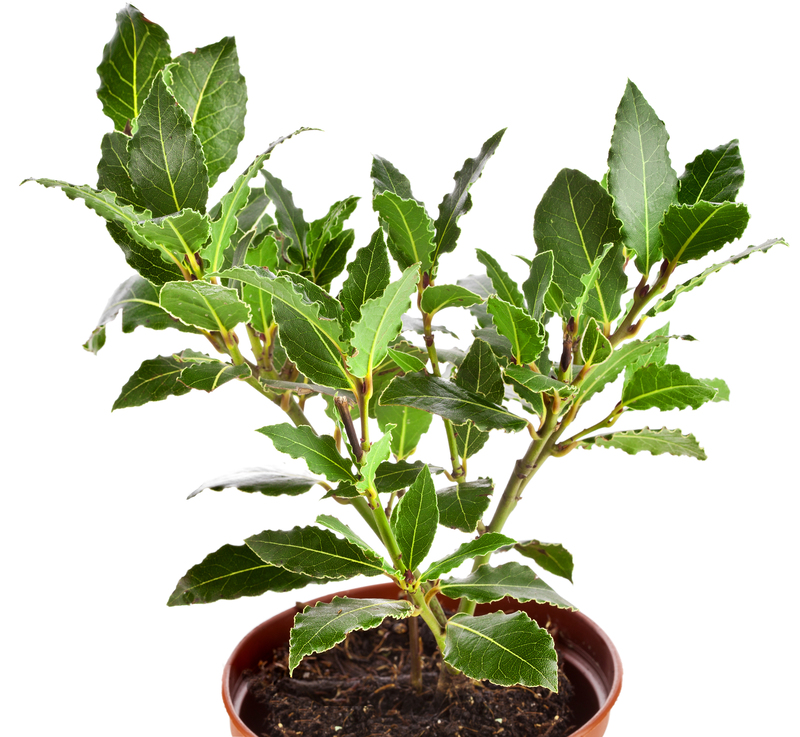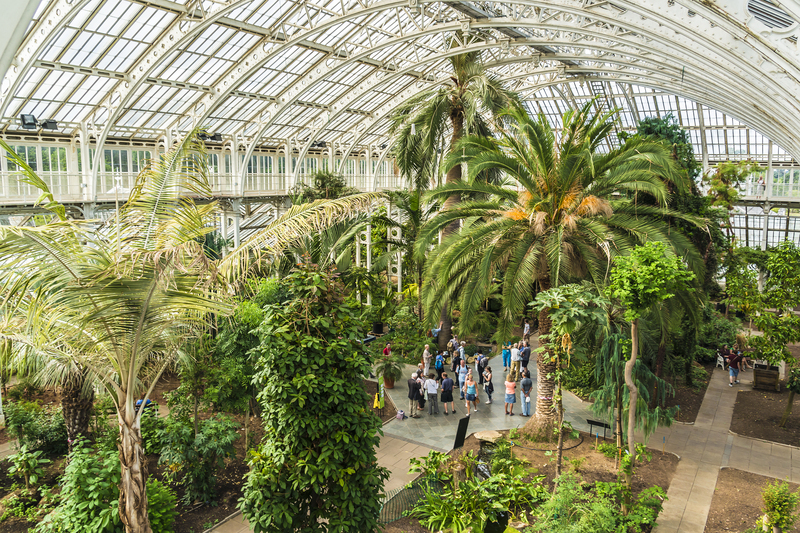Tips to Make Your Garden Accessible and Fun for Children
Posted on 20/09/2025
Introduction: Transforming Your Garden into a Child-Friendly Wonderland
Creating an accessible and entertaining garden for children can transform your outdoor space into a hub of imagination, learning, and active play. Children's gardens encourage curiosity about nature, enable crucial development through physical activity, and provide a safe haven for family bonding. Whether you have a small backyard or a spacious lawn, incorporating thoughtful designs and creative ideas ensures your garden is both accessible and enjoyable for kids of all ages. In this comprehensive guide, you'll discover expert tips to make your garden safe, inviting, and absolutely fun for children.

Why Create a Child-Friendly Garden?
Making your garden safe and enjoyable for children has wide-ranging benefits. Outdoor play stimulates physical fitness, nurtures creativity, and instils a lifelong appreciation for the natural world. Gardens that are designed with kids in mind can:
- Promote sensory development through touch, smell, sight, and sound
- Encourage active lifestyles and regular participation in gardening activities
- Support STEM learning via practical lessons on plants, insects, and weather
- Foster responsibility and empathy as kids care for plants and wildlife
Key Considerations for an Accessible Children's Garden
To make your garden more accessible and fun for children, keep these foundational considerations in mind:
- Safety first: Ensure the entire garden is a secure environment with no hidden hazards
- Easy navigation: Incorporate pathways and zone layouts suitable for young children or those with mobility aids
- Age-appropriate play areas: Design spaces and choose features that match your child's age and abilities
- Engagement: Create features that appeal to children's innate curiosity and encourage exploration
- Inclusivity: Ensure children of all abilities can participate in gardening fun
Top Tips to Make Your Garden Accessible and Fun for Children
1. Prioritize Garden Safety
Child-friendly gardens must be safe first and foremost. Consider these practical safety tips:
- Secure boundaries: Install fences or natural hedges to clearly mark garden limits and prevent wandering.
- Choose non-toxic plants: Avoid planting flowers, berries, or shrubs that could be harmful if touched or ingested. Examples include foxglove, nightshade, and lily of the valley.
- Maintain clear paths: Keep pathways even, smooth, and free of tripping hazards. Raised beds or pavers can simplify access for little feet and wheelchairs.
- Lock away chemicals and tools: Store all fertilizers, pesticides, and garden implements securely and out of reach.
- Supervise water features: Any pond, fountain, or birdbath should be shallow, securely covered, or fenced off to prevent accidents.
2. Design for Accessibility
Accessibility in outdoor spaces refers to how easily all children--regardless of age or mobility--can move around and participate. To make your garden more accessible for kids, try these strategies:
- Widen garden paths: Paths should be at least 90cm (about 3 feet) wide for wheelchairs and strollers.
- Use non-slip surfaces: Materials like rubber mats, gravel, bark chippings, or textured paving keep paths safe and comfortable.
- Install ramps: Ramps with gentle inclines provide easy access for all, especially for raised beds or uneven areas.
- Raise the beds: Build raised flower or vegetable beds at different heights to allow everyone, including seated children and wheelchair users, to participate in planting and harvesting.
- Consider vertical gardening: Wall-mounted planters, trellises, and hanging baskets add greenery at every height and are more reachable for children with mobility challenges.
3. Create Sensory Zones
Sensory gardens are specifically designed to stimulate a child's senses. Including multi-sensory elements makes your garden especially appealing and educational for children:
- Touch: Incorporate plants with interesting textures, such as lamb's ear, succulents, or ornamental grasses.
- Smell: Plant aromatic herbs like lavender, mint, lemon balm, and rosemary for delightful scents.
- Sound: Add features such as wind chimes, rustling grasses, bamboo, and bird feeders to introduce natural sounds.
- Sight: Choose bright, contrasting flowers and plants that attract butterflies, ladybugs, and bees for vibrant, visual interest.
- Taste: Design an edible corner with strawberries, cherry tomatoes, or snap peas children can harvest and snack on.
4. Include Child-Sized Features
Inviting children into the garden is easier when you provide tools, furniture, and features made just for them. Be sure to include:
- Small-scale tools: Child-sized trowels, rakes, watering cans, and gloves
- Miniature benches or tables: A dedicated picnic or crafts station for tea parties, drawing, and outdoor snacks
- Easy-to-open gates: Low latches that children can reach but are still secure from unintended escapes
- Personalized plant markers: Let children create their own labels for the seeds or flowers they plant, fostering ownership
5. Designate Play and Exploration Areas
To make your backyard entertaining and interactive for kids, carve out areas for fun and adventure. Mix gardening with play to keep children engaged:
- Sandboxes and mud kitchens: Encourage creative play and hands-on learning with dedicated areas for digging and making mud pies.
- Climbing structures or teepees: Install a safe climbing frame, willow den, or bamboo teepee dreamhouse for imaginative play.
- Obstacle courses: Lay out a mini balance beam, stepping stones, or tunnel made from logs for active outdoor fun.
- Nature scavenger hunts: Hide painted stones, garden gnomes, or bug hotels throughout the plot for regular themed hunts.
- Patches for wildflowers or meadows: Leave an area un-mowed or sown with wildflowers, attracting pollinators for natural adventures.
6. Plan for Year-Round Activity
To ensure your accessible children's garden stays engaging throughout the seasons, add features that provide interest no matter the weather:
- Weatherproof covered zones: Erect a gazebo, pergola, or pop-up tent to shelter from sun and rain.
- All-season plants: Grow evergreens, winter pansies, or berries that attract wildlife in cooler months.
- Nature crafts station: Store supplies for leaf pressing, painting stones, or making pinecone creatures for creative sessions after gardening.
- Bug hotels and birdhouses: Bring in wildlife for observation year-round, teaching kids about garden ecology.
7. Encourage Participation and Learning
Hands-on gardening activities aren't just fun--they're fantastic learning opportunities! Inspire and educate children by:
- Planting together: Choose easy-to-grow seeds (like sunflowers or radishes) and let children plant, water, and watch them grow.
- Starting a compost heap: Teach sustainability and the life cycle of organic matter, letting kids add green waste and monitor decomposition.
- Keeping nature diaries: Encourage children to record weather changes, plant growth, or wildlife spotted in the garden.
- Running small experiments: Set up tiny "plot trials" to see which plants grow best in different conditions or try sprouting beans in a clear jar for a window-side science lesson.
8. Grow Edible Plants (And Share the Harvest)
Planting fruits, vegetables, and herbs is a surefire way to get children invested in the garden. Consider:
- Quick-growing veggies: Radishes, lettuce, and peas have rapid results and keep children interested from seed to plate.
- Fruiting bushes: Strawberries, raspberries, and currants are easy to pick and fun to eat right off the plant.
- Herb spiral and pizza gardens: Create themed beds with basil, oregano, thyme, or tomato plants--perfect for making homemade pizza with homegrown ingredients!
- Harvest parties: End the growing season with a family cookout, salad-making session, or smoothie day celebrating your homegrown produce.
Additional Tips for a Child-Centered Garden
Think About Shade and Sunny Spots
- Provide shady nooks using trees, umbrellas, or playhouses to protect children from the sun.
- Ensure sun-loving plants are sited in open areas where children can help with watering and harvesting.
Add Color, Art, and Whimsy
- Let children paint rocks, flower pots, or stepping stones for a splash of DIY garden art.
- Use bright colors to mark plots, edges, or pathways for visual interest and early learning.
Welcome Wildlife
- Install bird feeders, butterfly houses, or insect hotels to teach kids how wildlife benefits the ecosystem.
- Designate areas for bug hunts and wildlife spotting.

Conclusion: Building Lifelong Memories in a Child-Friendly Garden
By following these comprehensive tips to make your garden accessible and fun for children, you'll create a safe, stimulating, and joy-filled outdoor space that nurtures exploration, learning, and family connection. Accessible children's gardens allow all kids--regardless of ability--to discover the wonders of nature and the satisfaction of growing something from seed to bloom.
Whether you are encouraging an interest in gardening, helping your children form deeper bonds with nature, or simply creating memories that will last a lifetime, investing in an accessible, inclusive, and entertaining garden for children is truly worthwhile. Let your garden become a cherished backdrop for play, learning, and growth for years to come!
Frequently Asked Questions
- What are some easy plants for kids to grow in a garden? Sunflowers, peas, cherry tomatoes, marigolds, radishes, and nasturtiums are beginner-friendly and quick to grow.
- How do you ensure gardening tools are safe for children? Choose age-appropriate, blunt-edged, and lightweight tools. Supervise usage and store sharp or adult-sized implements out of reach.
- How can I adapt my garden for children with disabilities? Incorporate wide, smooth paths, raised beds, sensory elements at different heights, and seating areas that are wheelchair-friendly.
- Should I include a water feature in a children's garden? Only if it's safely designed, shallow, and well supervised--or opt for dry riverbeds, birdbaths, or misting fountains to minimize risk.
With a bit of planning and creativity, your garden can become a beloved children's sanctuary--nurturing, accessible, and fun for the whole family!

